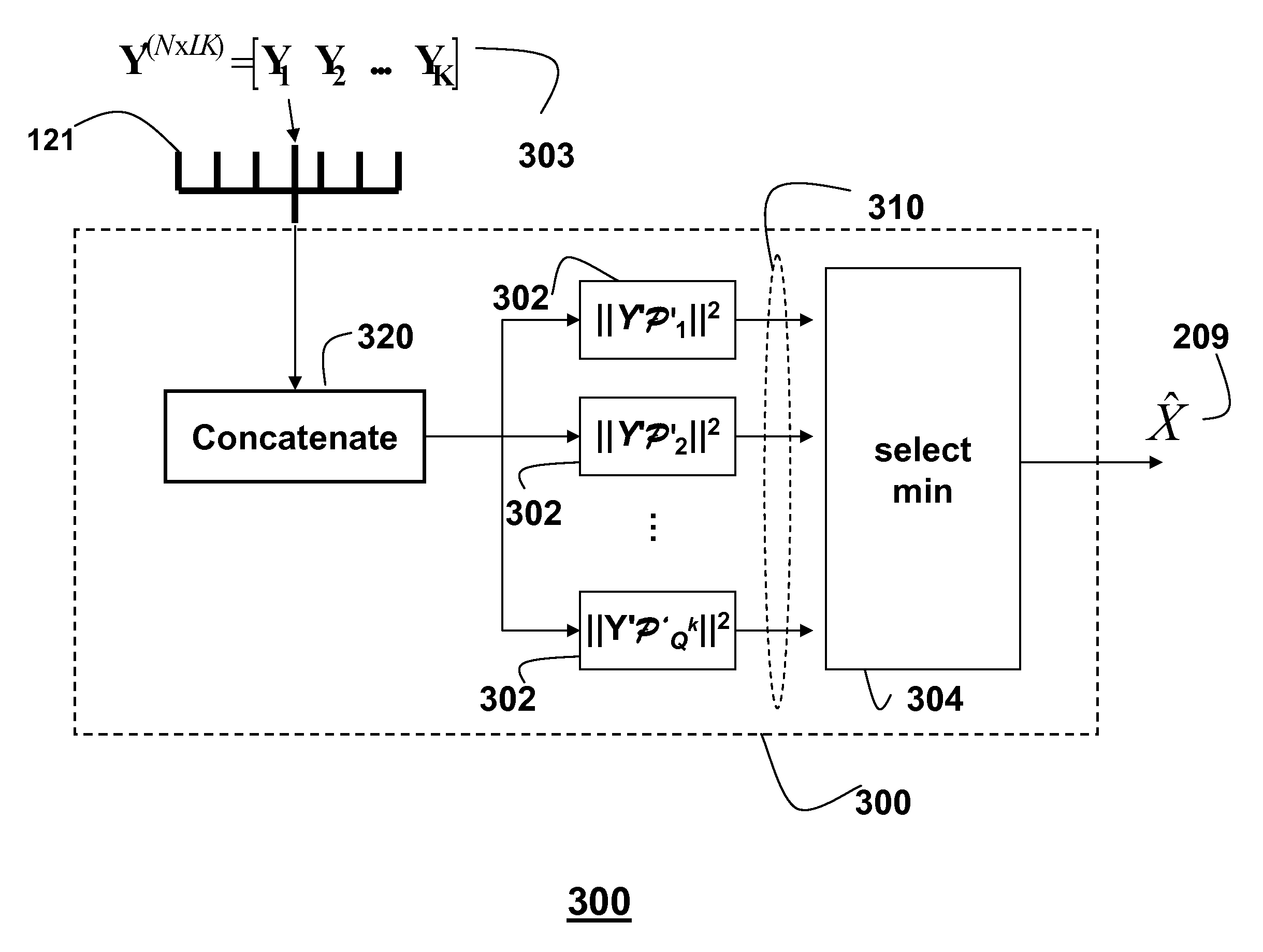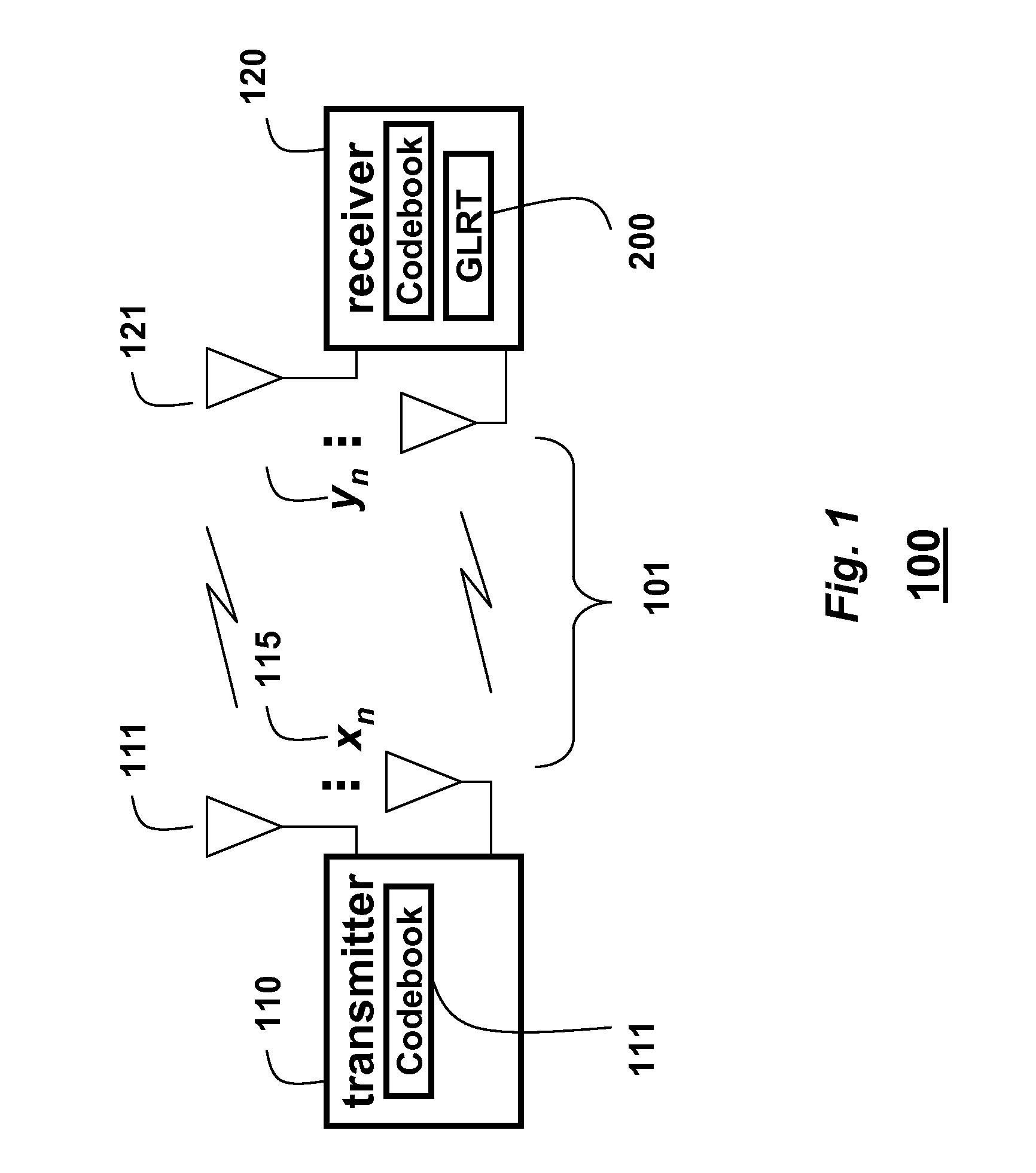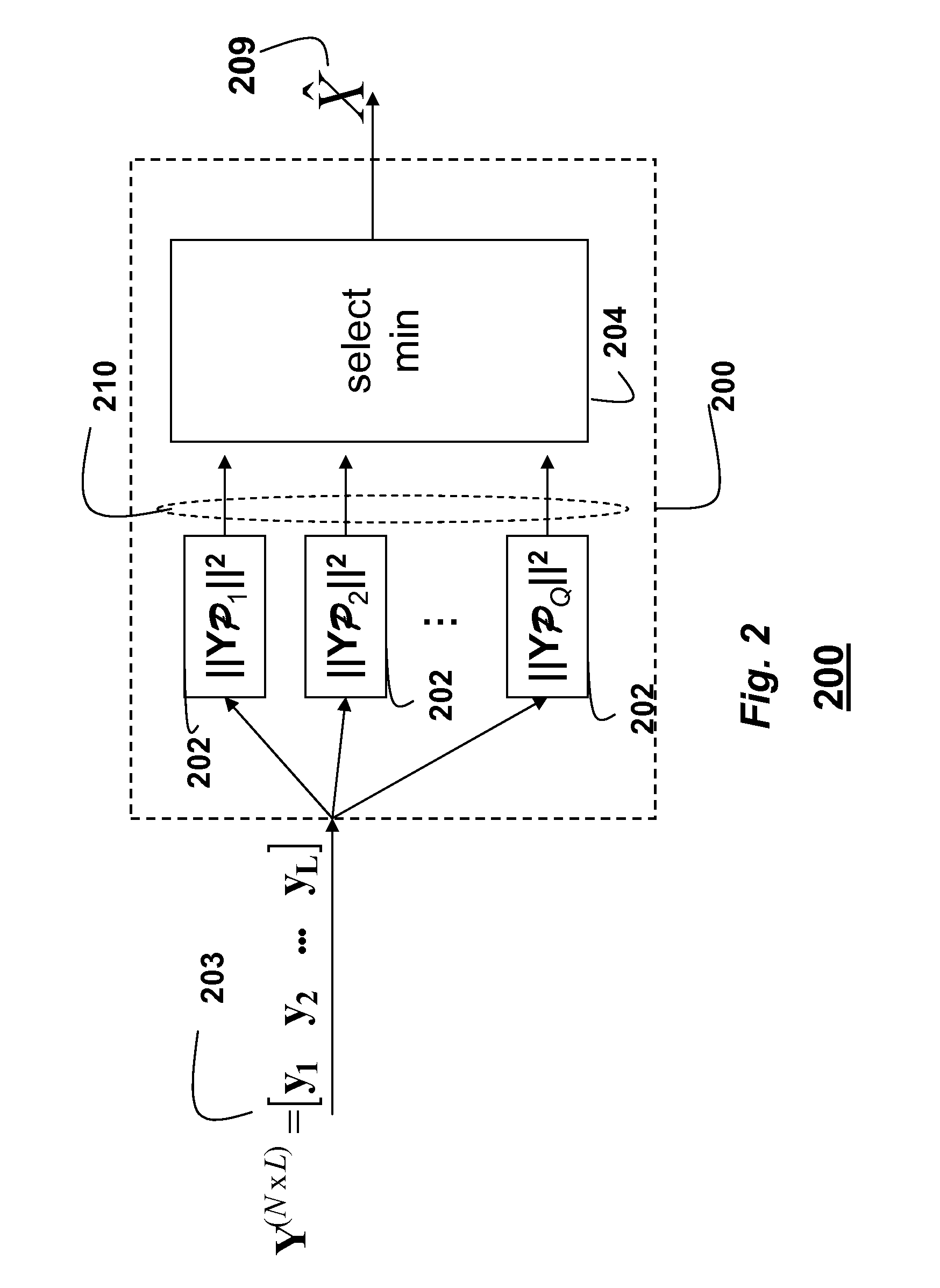Method for decoding codewords transmitted over non-coherent channels in MIMO-OFDM networks using Grassmann codes and superblocks
a technology of mimoofdm network and codewords, applied in the field of multi-input, multi-output network, can solve the problems of severe performance degradation of conventional glrt receivers
- Summary
- Abstract
- Description
- Claims
- Application Information
AI Technical Summary
Benefits of technology
Problems solved by technology
Method used
Image
Examples
Embodiment Construction
[0016]Embodiments of the invention provide a method for decoding codewords received at a receiver over non-coherent channels in a multi-input, multiple output (MIMO) network using orthogonal frequency demultiplexing (OFDM), and wherein the codewords are encoded using Grassmann codes.
[0017]In this description, matrices and vectors are indicated by bold-face italic letters in capital cases and small cases, respectively. A complex-valued matrix is X∈m×n, where denotes a complex field. The notations
X*, XT, X†, X31 1, tr[X] and X∥
represent a complex conjugate (*), a transpose (T), a Hermite transpose (†), an inverse (−1), a trace (tr), and a Frobenius norm (∥.∥) of X, respectively. A vector-operation is denoted vec[.] aligns all columns of a matrix into a single column vector in a left-to-right manner, and is the Kronecker product of two matrices. The set of real numbers is .
[0018]Non-Coherent MIMO-OFDM Networks and Signal Processing
[0019]In M×N multiple input, multiple output (MIMO) o...
PUM
 Login to View More
Login to View More Abstract
Description
Claims
Application Information
 Login to View More
Login to View More - R&D
- Intellectual Property
- Life Sciences
- Materials
- Tech Scout
- Unparalleled Data Quality
- Higher Quality Content
- 60% Fewer Hallucinations
Browse by: Latest US Patents, China's latest patents, Technical Efficacy Thesaurus, Application Domain, Technology Topic, Popular Technical Reports.
© 2025 PatSnap. All rights reserved.Legal|Privacy policy|Modern Slavery Act Transparency Statement|Sitemap|About US| Contact US: help@patsnap.com



